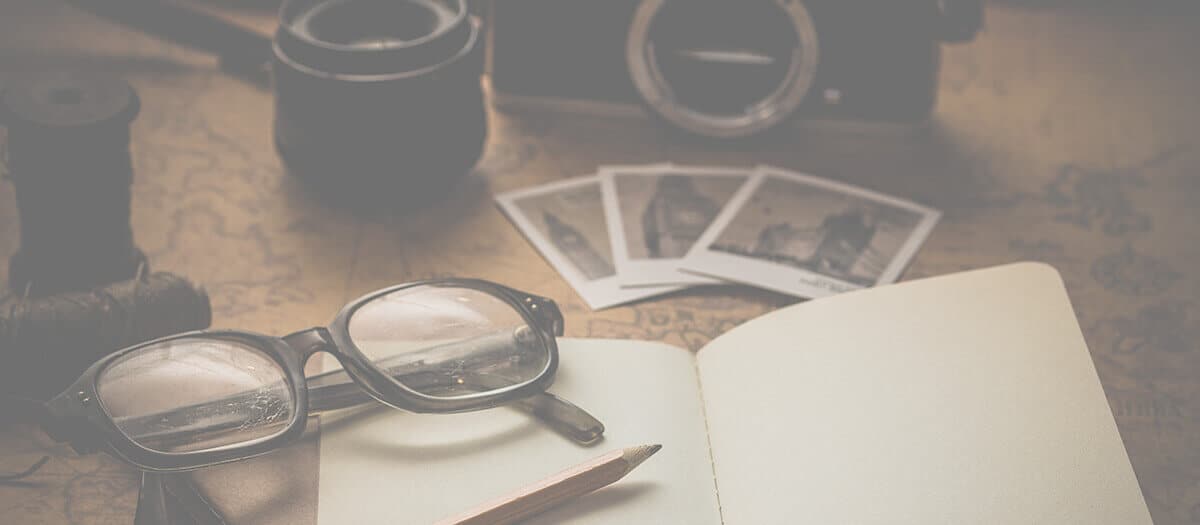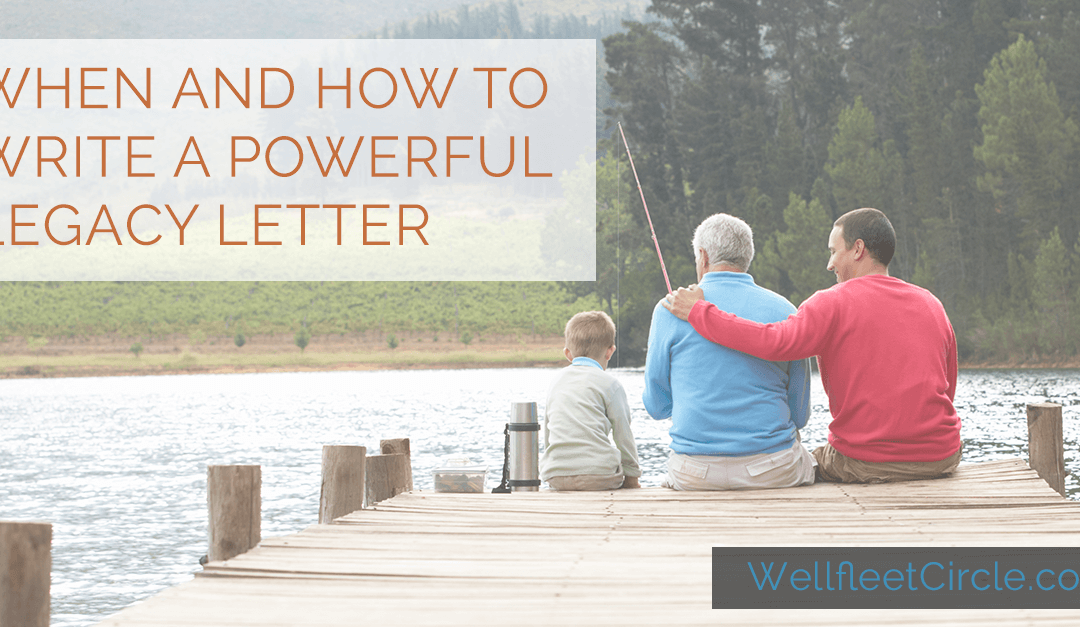So When Should I Write A Legacy Letter?
Any time you want to share your love or encouragement, your values or wisdom, your history or traditions is a good time to write. Times of transition are particularly fitting times to reflect and write.
Is there a transition coming up for someone special to you?
- Is an older relative celebrating a major anniversary?
- Do you know somebody celebrating a milestone birthday?
- Is someone special retiring?
- Is your child or another important younger person graduating from high school or college?
- Is someone dear to you heading to college or starting their first real job?
- Is a friend getting married or having a child?
These are only some of the special moments that call out for a Legacy Letter.
Four Keys to a Powerful Legacy Letter – The Wellfleet Method
Your letter can be multiple pages or simply the following four paragraphs:
- The Why
- The Story
- The Reflection
- The Love
No matter the length of your letter, if you follow the method below, you will write a powerful and meaningful letter.
A few years ago I was blessed with the opportunity to help a family create a book of Legacy Letters for the family’s 90-year-old patriarch. In all, there were more than 20 letters from three generations. What was truly remarkable was how beautiful and deep the grandchildrens’ letters were. The grandfather clearly had a strong impact on the youngest generation and it showed in their words. They have graciously allowed me to share excerpts of their letters to help me show you how to use my four part template.
PART ONE: THE WHY
In your first paragraph(s), introduce who you are writing to and why you are writing the letter.
For example, in this lovely letter from one of the grandsons (who was named after the grandfather), he opens as follows:
Dear Grandpa,
On this most momentous of occasions, I thought that I would take the time to write down a few of my most treasured memories of our time together…, and congratulate you on 90 years of a truly remarkable life.
Ever since I can remember, I have always looked up to you. Perhaps it is because it is natural for any grandson to admire the accomplishments (which are numerous) of his grandfather. Perhaps it is the special bond that any two people who share a name possess inherently, the latter always thinking of continuing the legacy of the former. Or maybe it is because you have continued to be an important role model, life coach, and father figure in my formative years. Whatever, the case, I like to think it is more than the sum of the parts, and I believe that I would not be the person I am today without you.
The salutation (Dear Grandpa) tells the who. The first paragraph gives the occasion and purpose of the letter, and the second paragraph gives specifics about the why.

PART TWO: THE STORY
Tell a story or stories that highlight the main thing you want to share with your recipient. This can be family history, values, knowledge or wisdom that you want to share.
The story is essential to your Legacy Letter. The Wellfleet Method uses storytelling techniques to illustrate those core beliefs and ideas you want to share. By telling a story, in your own voice, your letter will be both intensely personal and also readable and compelling. The story can either be about you, about the recipient of the letter, or both.
One of the granddaughters shared several stories. Here is one:
Even though I am across oceans, I want you to know that I am thinking of you. In fact, so often I am reminded that the one of the reasons I am here, or have gone to any of the wild and strange and far off places I like to frequent, is because of you. I remember growing up and taking in your wanderlust. You showed me big books of pictures of the pyramids of Egypt, sent me postcards from Europe, had strange and foreign masks hanging from the walls in your house. I reveled in your curiosity, knowing that I wanted to be curious in the same way. I think in the stories you told me growing up, you helped raise me to be an adventurer, raised me to be like that part of you…
Notice that the granddaughter isn’t just sharing random memories here. She’s choosing specific memories and expressing how those things from the past have shaped her.
PART THREE: THE REFLECTION
What did you learn from the story? Why is the story important to you? What is it that you are hoping to transmit to your reader? Adding your reflection to the letter makes the story personal and ties it back into The why.
From a letter of a granddaughter:
My favorite memories of you are not serious; you, more excited than any of us kids to be at the Pirate Museum, the joke memorial on the path up to your house, the funny books and photos you collect and send to me, the annual giving of strange gifts at Christmas.
There is so much to admire about you: your kindness, your intelligence, your work ethic, but what I look up to the most is your ability to make life fun, to make any situation joyful. You have taught me that respecting yourself does not mean that you should always take yourself seriously, and in fact you shouldn’t. I hope to carry this with me through life, to spread the kind of joy that you have given to me…
These paragraphs share memories that might have triggered smiles and stories from other family members, but they go beyond because of the writer’s reflection. When she says “You have taught me . . . “ and “I hope to carry this with me,” she is showing the impact of the recipient on her life. She’s sharing her why.

PART FOUR: THE LOVE
What truly distinguishes a Legacy Letter from an ordinary letter is the last aspect. Legacy Letters have a religious history and typically ended in a blessing. The Wellfleet Method uses a broader idea based in the concepts of Love and hopes and dreams for the future.
Here is how the first grandson used love to finish his letter:
To me, your 90th birthday marks as not just an occasion to celebrate your life and your many feats in becoming the man you are today. It reminds me to be truly grateful that I have been blessed with such a wonderful, kind, intelligent, and witty person to have shaped me throughout my life. I hope you have a fantastic birthday full of love, life and happiness.
With love from your grandson
Notice how he goes back to why to wrap up the letter. And then he shares his hope for the recipient and shares his love.
Now It’s Your Turn To Write
Can you think of someone who might love to receive a Legacy Letter? What’s your why? What story will you tell? What reflection will you share?
Legacy letters last a lifetime and help you express just how much you care for the people in your life. I invite you to grab a copy of Deepening Connections with Legacy Letters where I show you how to craft one from the heart.

